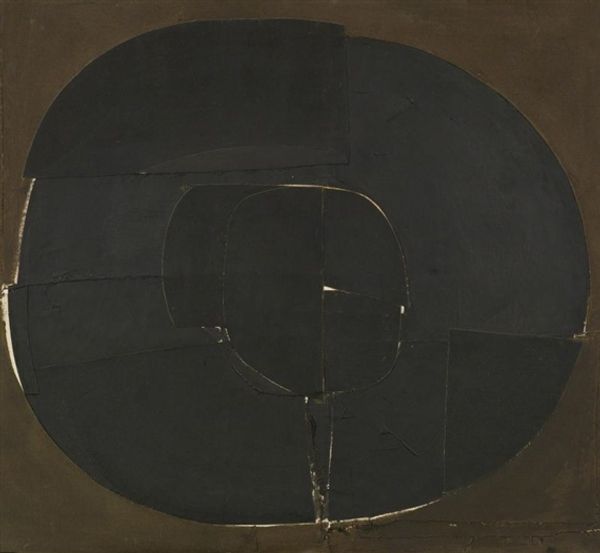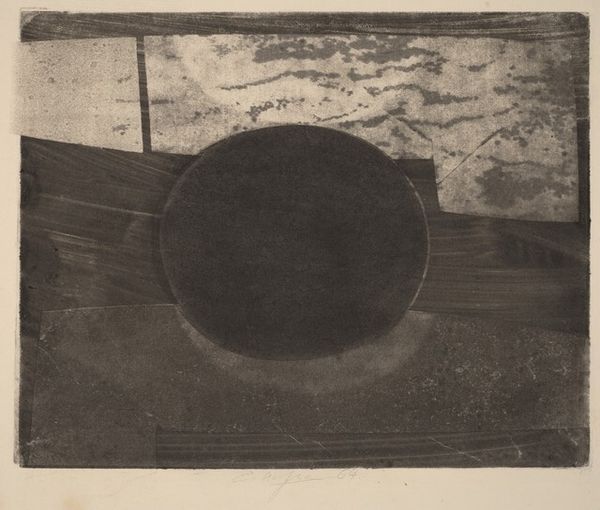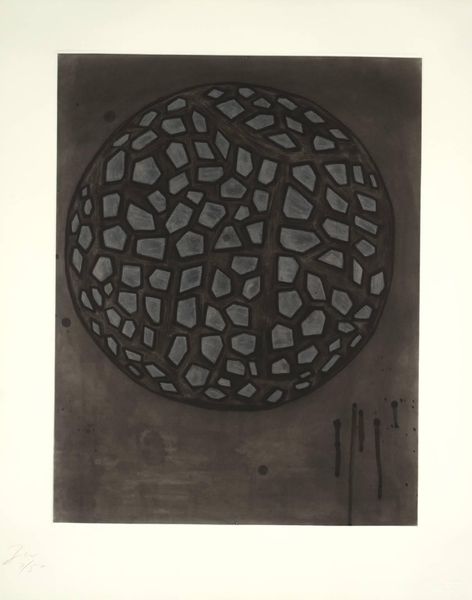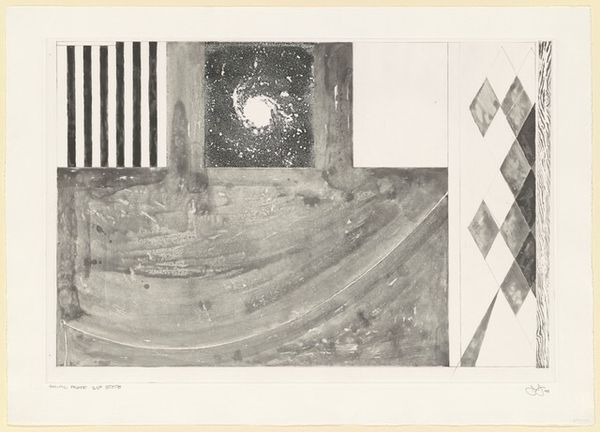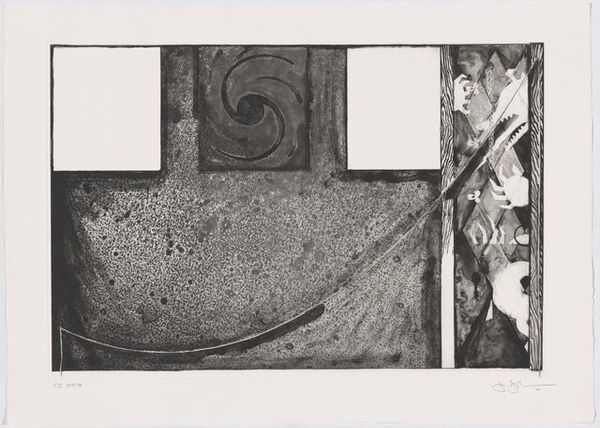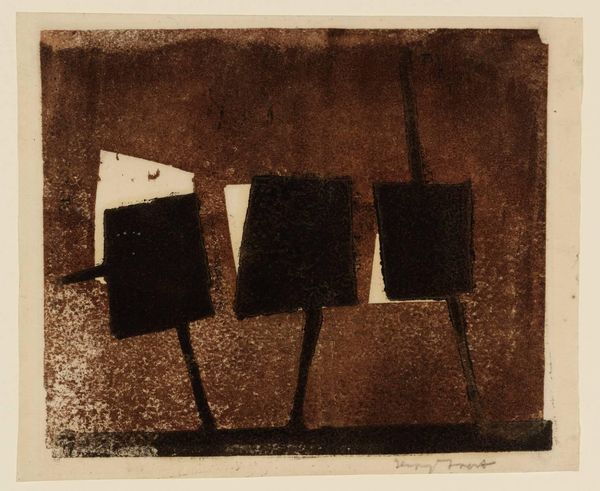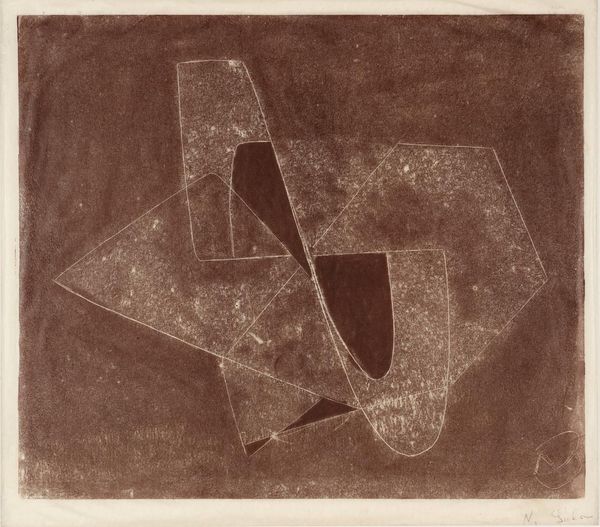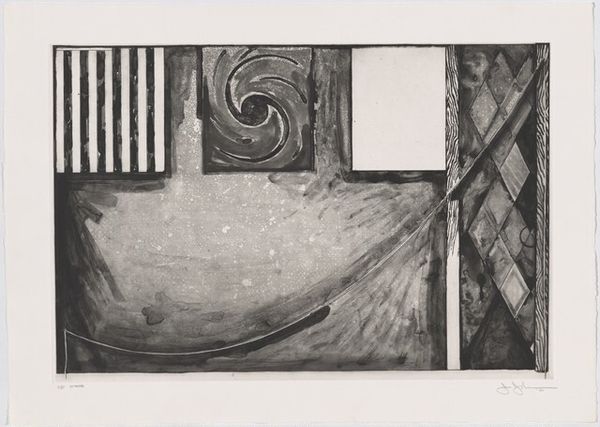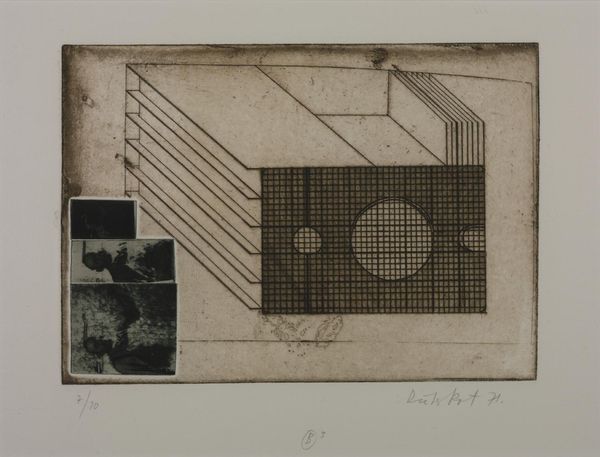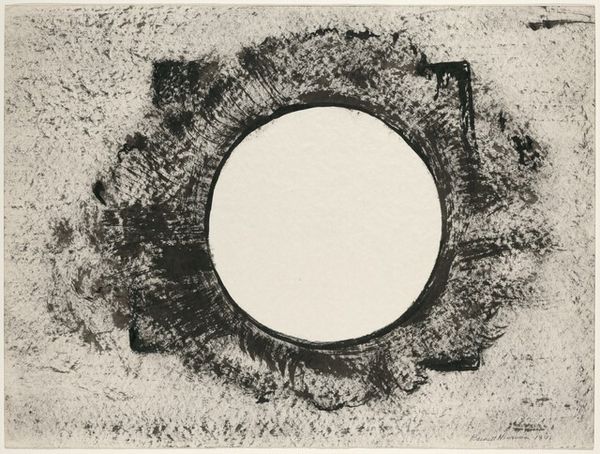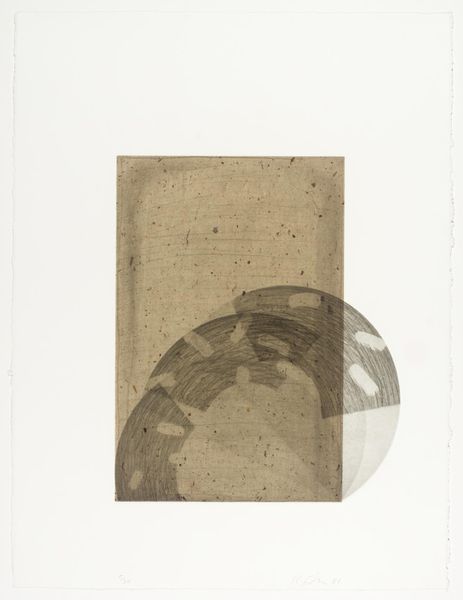
graphic-art, print, monoprint
#
graphic-art
# print
#
monoprint
#
geometric
#
abstraction
Dimensions: plate: 28.6 x 35.9 cm (11 1/4 x 14 1/8 in.) sheet: 39.9 x 51.7 cm (15 11/16 x 20 3/8 in.)
Copyright: National Gallery of Art: CC0 1.0
Editor: We're looking at Cestmir Kafka's "Earth" from 1965, a monoprint. There's something very stark and cosmic about it; a dark circle dominates, surrounded by these sort of fractured geometric shapes. It reminds me of a broken planet seen from afar. What catches your eye most in this piece? Curator: Ah, Kafka! There's a deep, quiet energy in his work, isn't there? This piece feels almost archaeological, like digging up remnants of a forgotten technology or a symbolic language we've yet to decipher. See how the central circle both anchors the composition and seems to float weightlessly? And the smattering of imperfections, like the subtle bubble-like details scattered across the rectangles – are they blemishes or tiny, sparkling universes unto themselves? Editor: That's beautiful. I was so focused on the geometric forms, I missed those tiny details. It’s like… seeing stars amongst ruins? Curator: Exactly! It begs the question: is Kafka depicting decay or potential? The “Earth” title pulls us in one direction, toward a grounded, tangible reality, but the abstraction pushes us out into the vast, unknown. What I find particularly intriguing is the texture of the monoprint; the slight graininess adds this feeling of age. It is as if the very material is whispering secrets of time. Does it give you a sense of the past? Editor: Definitely. I initially thought it was all about geometric abstraction, but now, seeing the texture and thinking about that title, "Earth," it feels more like a commentary on time, destruction, and maybe even a hint of rebirth? Curator: I completely agree! Sometimes the most seemingly simple images are the most complex and thought-provoking. Kafka here creates a profound visual poem using a simple printing method. It is wonderful how much it has opened for us both.
Comments
No comments
Be the first to comment and join the conversation on the ultimate creative platform.
